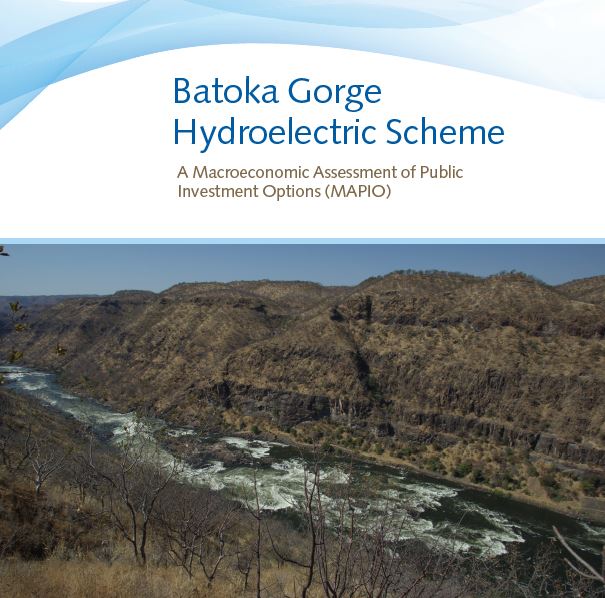Batoka Gorge Hydroelectric Scheme-A Macroeconomic Assessment of Public Investment Options (MAPIO)
This paper outlines a simple model to assess the returns of a potential investment program in the hydropower sector. The Macroeconomic Assessment of Public Investment Options (MAPIO) model provides an analysis of impacts on key macroeconomic variables, such as exports, imports, gross domestic product (GDP), prices, and fiscal accounts. While its analytical capacity requirements are modest compared to CGE models, it can be easily applied to a variety of programs in different contexts provided accurate and detailed information is available regarding the project’s construction, operation, and anticipated returns. The objective of this paper is to improve the tools available to facilitate the assessment of the macroeconomic implications of large infrastructure projects and enhance the capacity for management of public investment decisions. The MAPIO Model was used to provide a macro-economic assessment of the Batoka Gorge Hydroelectric Scheme (HES). This is one of a series of hydropower investments conceived as part of a cascade on the Zambezi River Basin. The recommended option for the Batoka Gorge HES is a 181-meter-high, 720-meter long roller-compacted concrete (RCC) gravity arch dam with two surface power stations situated either side of the river; each with a total installed capacity of 1,200 megawatts, giving a total installed capacity of 2,400 megawatts. It is envisaged that the Batoka Gorge HES would be implemented over a 7-year period with the total cost estimated at US$2.6 billion. The MAPIO model shows that the Batoka Gorge HES provides a robust financial and economic investment option with a net positive impact on the national economies in both Zambia and Zimbabwe. The analysis suggests that the project would generate significant financial and economic returns with limited impacts on prices and imports. The impact on the Governments' fiscal accounts is expected to be modest, due to the concessional nature of the debt and the introduction of an innovative special purpose vehicle (SPV) model. The estimates are considered conservative and the returns remain robust when subjecting the model to extreme assumptions to test the sensitivity of the results.
